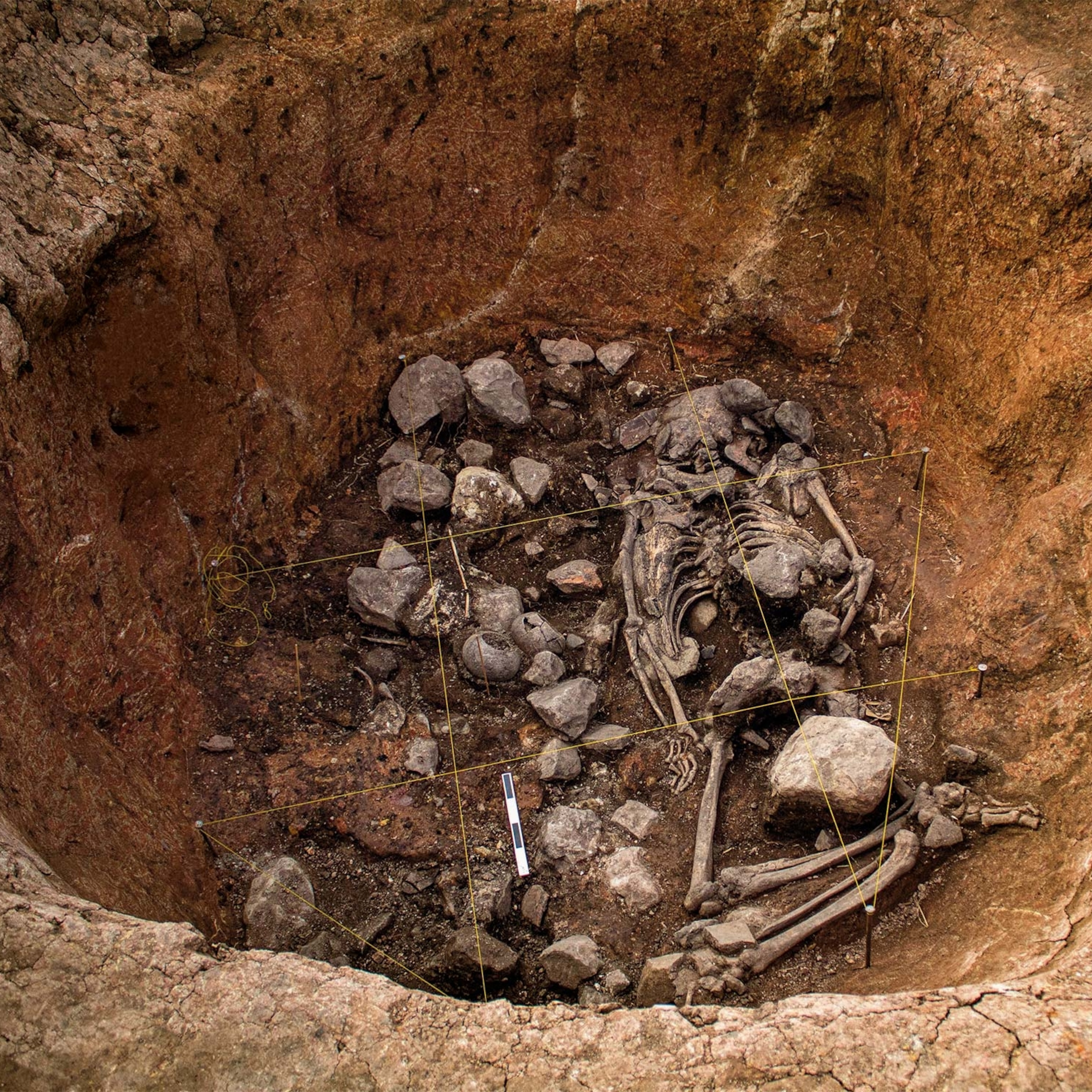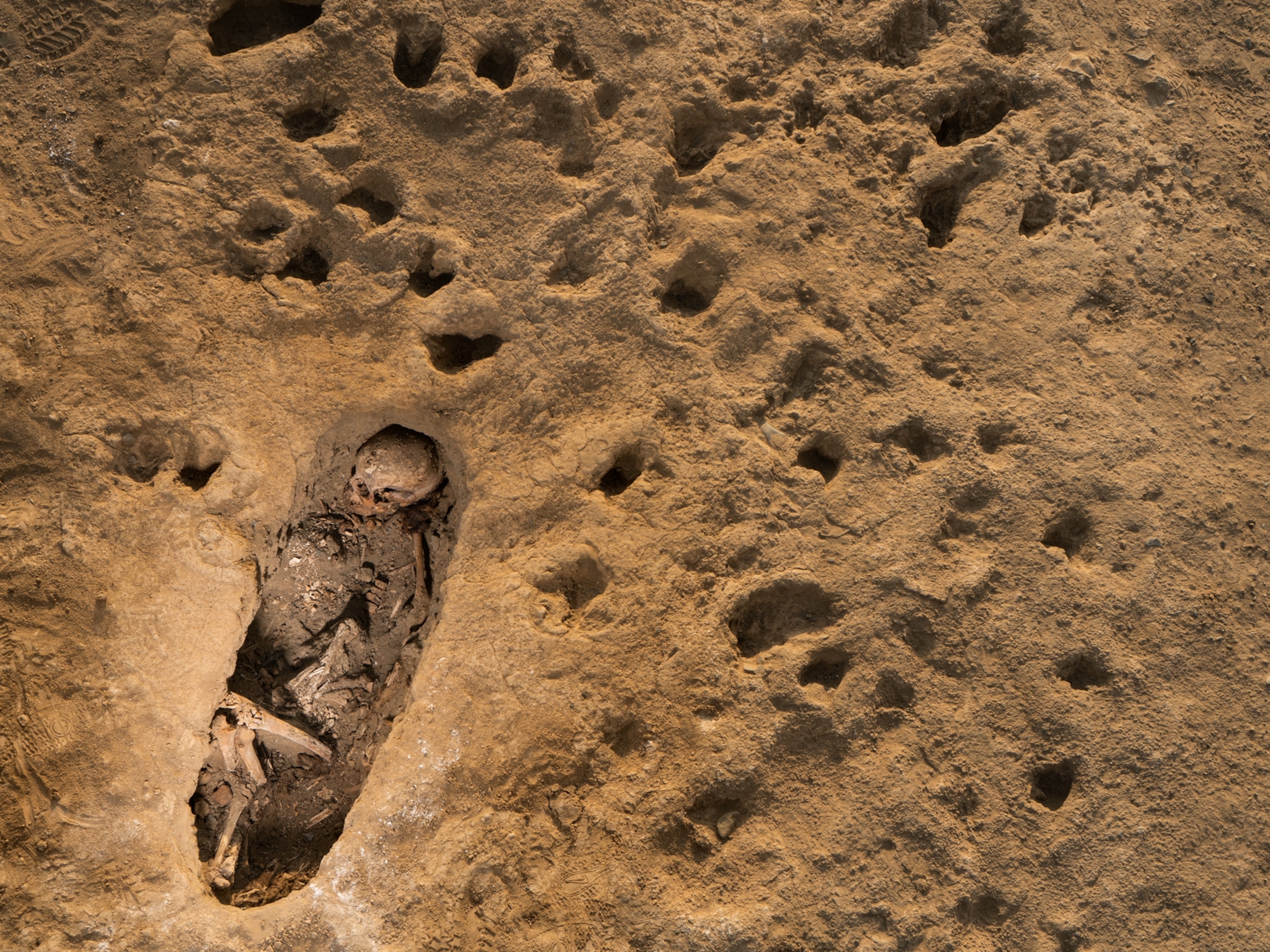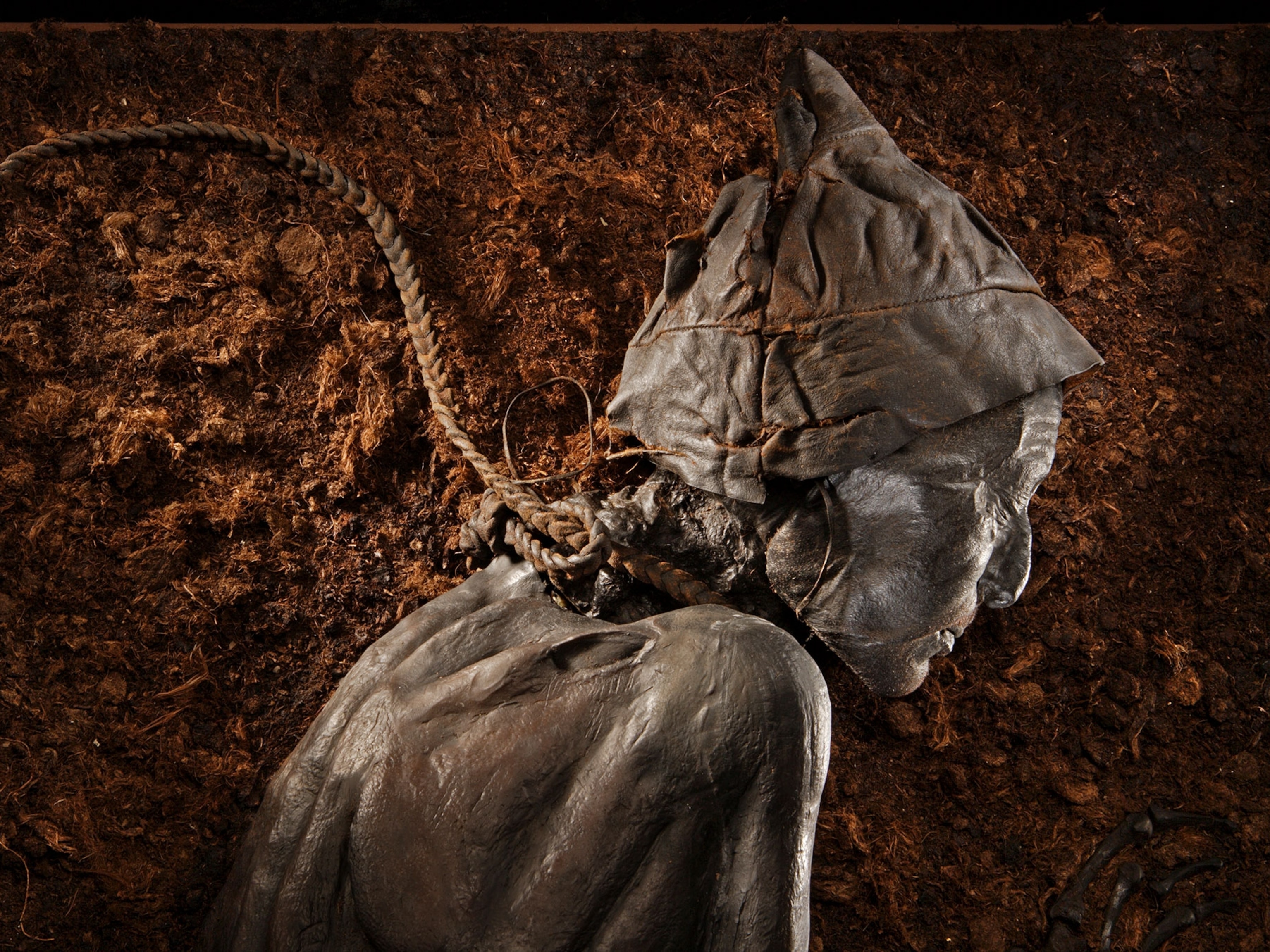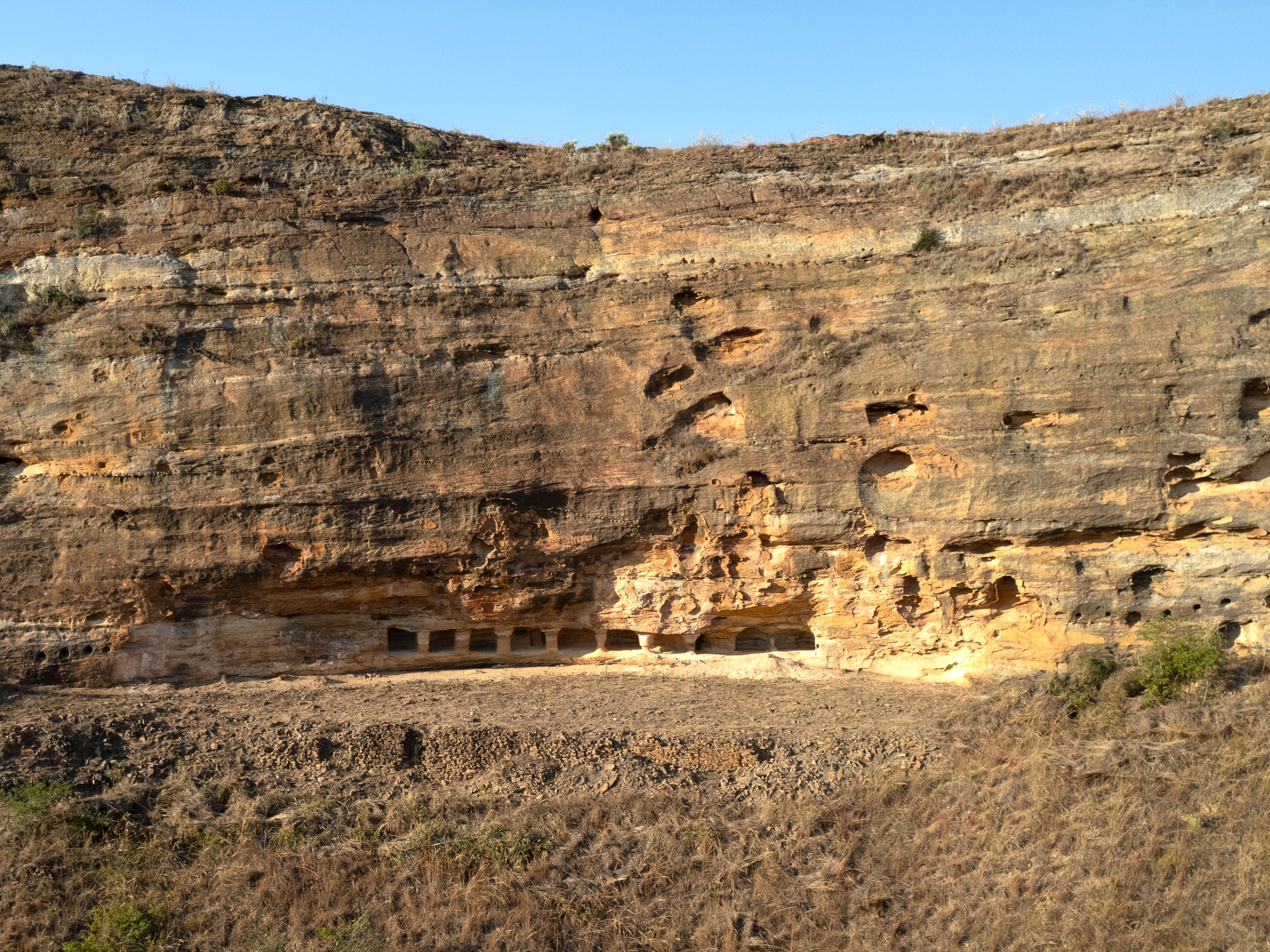This Inca girl was frozen for 500 years. She just got a new face.
The mummified remains of the Ice Maiden of Ampato—a child sacrifice victim—were stunningly preserved. Now, archaeology and science have restored her gaze.

Sometime in the mid to late 1400s, a 15-year-old girl was escorted up an Andean peak and sacrificed to Inca gods. Buried on the mountain with a variety of offerings, the young woman’s body naturally mummified over time, with her hair, her fingernails, and the colorful robes she wore on her last day intact. But at some point across the centuries, her face became exposed to the elements, her features slowly vanishing over seasons of sunlight and snowfall.
Now that long-lost face has been recovered, thanks to painstaking archaeological analysis and forensic reconstruction. A striking 3D bust of the young woman, known today as the Ice Maiden of Ampato, is the centerpiece of a new exhibit in Peru and part of an ongoing effort to understand the practice of human sacrifice in the Andes half a millennium ago.
When National Geographic Explorer Johan Reinhard encountered the mummy, also known as Juanita, atop 20,700-foot Mount Ampato during a 1995 expedition, he knew almost immediately that he had found something spectacular.
“At first it looked like one big bundle of textiles,” Reinhard recalls. But then he saw the wizened face amid the folds of fabric. Here was a young victim of the mysterious Inca ritual known as capacocha.

The practice sacrificed mostly children and young women, who were offered to the gods not only in response to natural disasters or simply to please them but also to consolidate state power in far-flung provinces of the Inca Empire. Capacocha played an important part in sustaining the empire and involved feasts and grand processions to accompany the children, who appear to have been chosen for their beauty and physical perfection. Being selected for sacrifice, researchers believe, would have been considered a deep honor by the child’s family and community.
Most of the information that’s known about capacocha, however, is secondhand. Dagmara Socha, an archaeologist with the Center for Andean Studies at the University of Warsaw, studies the ritual and commissioned the facial reconstruction of the Ice Maiden of Ampato. “No European colonist ever saw the ceremony,” she explains.
(Learn what may have made the ancient Chimu society sacrifice its own children.)
Despite gaps in the historical record, the high-altitude archaeological discoveries of more than a dozen Inca children on Ampato and other Andean mountains provide critical evidence for what happened during these rituals.
The means of sacrifice varied, perhaps because of customs related to specific gods. Some children were buried alive or strangled; the Ice Maiden’s life ended with a single blunt-force blow to the back of her skull.
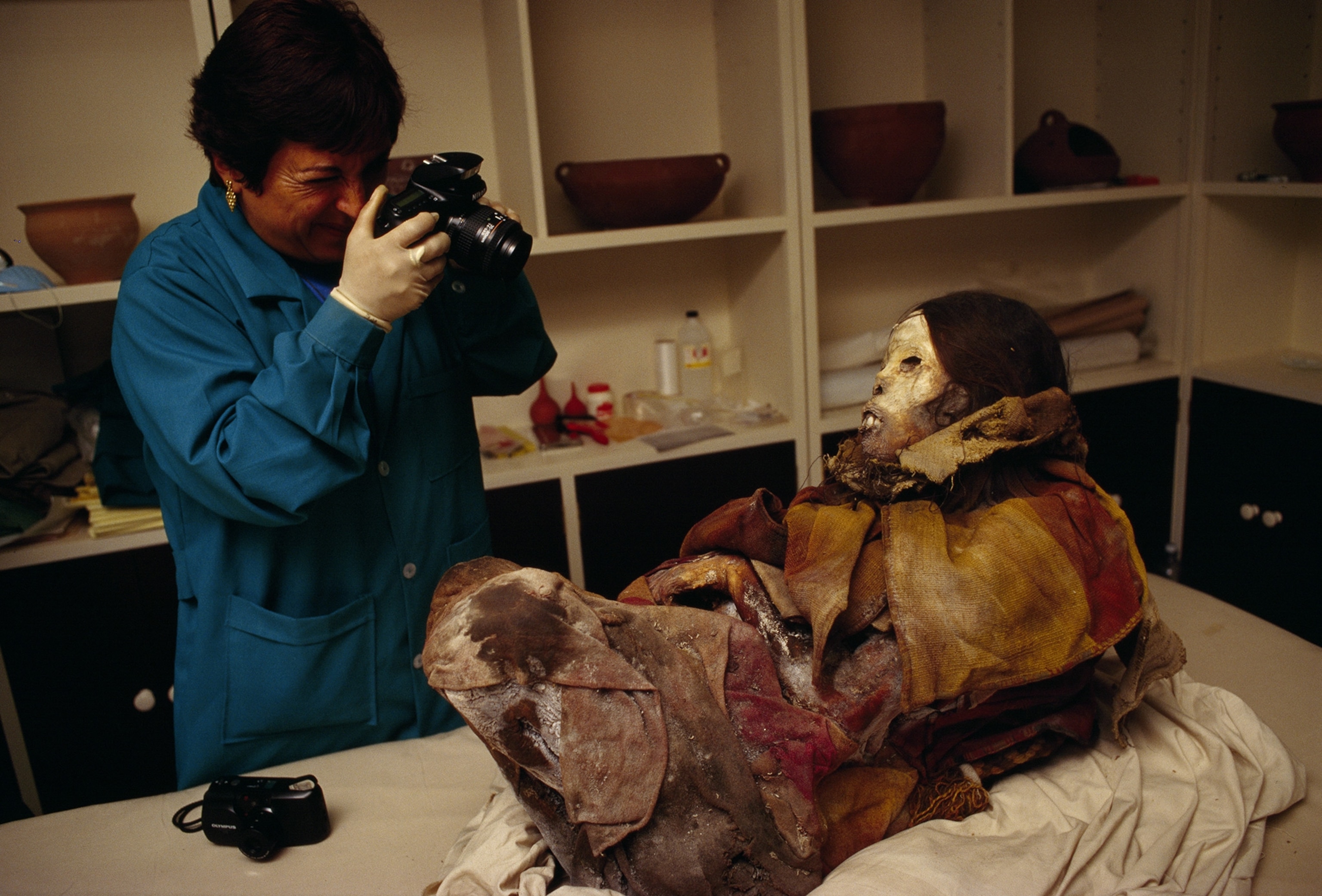
Oscar Nilsson knows the girl’s skull well: He spent months with a replica of it in his Stockholm studio, eventually fashioning a sculpture of her that, glimpsed from afar, almost seems alive.
It was a two-step process, says the Swedish archaeologist and sculptor. First, Nilsson immersed himself in the world of his subject with an archaeologist’s eye for detail, digesting as much data as possible to understand what she might have looked like. Even without her mummified face, he could extrapolate the likely depth of the facial tissue that once draped those bones—using everything from CT scans to information about diet and disease—to make educated guesses about her face.
(See more of Oscar Nilsson's remarkable work here. And here. And here.)
Then came the handiwork. Nilsson printed a 3D replica of the Ice Maiden’s skull, plugging wooden pegs onto its surface to guide the depth and placement of each handcrafted, plasticine clay muscle. Eyes, masseters, a nose, the delicate ropelike tissues that constitute a human face—each was added in turn. After using a mold to make a silicone bust, he added hundreds of individual hairs and pores in shades of brown and pink. It took 10 weeks.
The resulting sculpture, wrapped in robes woven by women from Peru’s Centro de Textiles Tradicionales del Cusco, is the main attraction of “Capacocha: Following the Inca Gods,” which opened in November 2023 at the Museo Santuarios Andinos in Arequipa.

The Ice Maiden reconstruction is displayed alongside her mummified remains and accompanied by the stories of 18 additional children selected for capacocha atop Ampato and other Andean mountains. Their ages range from eight to about 16, and the mummies and skeletal remains of several are featured as 3D models in the exhibition, which also showcases holographs of some of the sacred items buried alongside them.
(How scientists bring ancient faces back to life.)
These natural mummies offer scientists intriguing clues about their last days. When Socha and colleagues conducted toxicological and forensic analyses of the remains of a toddler and four six- to seven-year-old victims of capacocha, the researchers found that they were well nourished in the months before their sacrifice. They were also fed coca leaves, ayahuasca vine, and alcohol in the weeks before their deaths—perhaps not so much to intoxicate them as to keep them sedated and anxiety free while the timeline hurtled toward their sacrifice.
“We were really surprised” by the toxicology results, Socha says. “It wasn’t only a brutal sacrifice. The Inca also wanted the children to be in a good mood. It was important to them that they go happily to the gods.” High altitude, psychotropic substances, the dramatic view, the knowledge the afterlife was near—all must have made for an astonishing ceremony, says Reinhard. “The whole phenomenon must have been overpowering.”
During the last phase of Nilsson’s reconstruction, he spent hours contemplating, and attempting to capture, the young girl’s presence half a millennium after her death. The result is both unsettlingly realistic and jarringly personal. “She was an individual,” the forensic reconstructionist says. “She must have understood her life would end on the mountaintop in a couple of weeks. We can only hope that she believed in the afterworld herself.”
For Reinhard, the Ice Maiden’s story came full circle when he finally saw the face of the girl he carried down the mountain on his back decades ago. “It brings her back to life,” he says. The reconstruction focuses as much on her culture and daily life as on her violent death.
But Nilsson never forgot the way the Ice Maiden died, even as he revived her through his reconstruction. More than anything, he says, he wanted to convey a sense of being frozen—a nod not just to her icy, mummified future but also to a girl teetering on the edge of eternity, though still very much alive.
“She knew she was supposed to smile, to express pride,” he says. “Proud to be chosen. But still very, very afraid.”
This story appears in the May 2024 issue of National Geographic magazine.
A previous version of this story incorrectly described heart removal as a part of the capacocha ritual.

